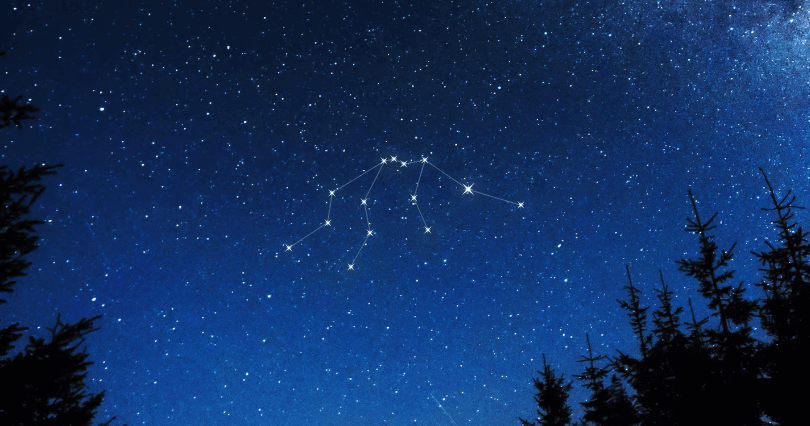Aquarius Constellation

Aquarius constellation is faint and one of the largest constellations in the southern hemisphere. Its name is water bearer in Latin and is introduced in the 2nd century CE by famous Greek astronomer Ptolemy. The constellation contains only stars not brighter than magnitude 3.0 and it lies on the ecliptic so could be easily seen from both hemispheres. The neighborhood constellations are Cetus, Delphinus, Piscis Austrinus, and Pisces – all constellations related to the water, and therefore the symbol for this constellation is ♒. This constellation was very important to many cultures and civilization and it was believed that it had certain connections with rainy seasons. Aquarius is now listed as one of the 88 modern constellations by International Astronomical Union IAU.
How to find Aquarius constellation in the night sky?
Aquarius constellation is the 10th largest constellation in the sky, in the fourth quadrant of the southern hemisphere and the region called the Sea (this region contains many constellations that are linked to the water). It could be seen from both hemispheres at latitudes between +65° and -90°. The best time to look for it is during culmination in September. Aquarius is located near these constellations: Aquila, Capricornus, Cetus, Delphinus, Equuleus, Pegasus, Pisces, Sculptor, and Piscis Austrinus.
Aquarius constellation is a member of the Zodiac family of constellations along with these: Aries, Taurus, Gemini, Cancer, Leo, Virgo, Libra, Scorpius, Sagittarius, Capricornus, and Pisces.
Major stars in Aquarius constellation
Aquarius has several important stars with its known planets, and many notable deep-sky objects like the globular cluster Messier 72 and Messier 2, the asterism Messier 73, Atoms for Peace Galaxy, the Saturn Nebula, the Helix Nebula, the Aquarius Dwarf Galaxy and famous supergiant star Sadalsuud – Beta Aquarii. It contains no stars brighter than magnitude 3, and the brightest star is its Beta star. The nearest one is EZ Aquarii, 11.27 light-years distant from our Solar system. This constellation is home to a few Messier objects, and there are four meteor showers linked to this constellation – the March Aquariids, Delta Aquariids, Iota Aquariids, and Eta Aquariids.
Mythology of the Aquarius Constellation
This constellation was discovered by Ptolemy in the 2nd century but was known to many others long even before that time. Aquarius constellation is associated with ancient Greece and its mythology. It was described as a young man pouring water – the other constellation Piscis Austrinus. This constellation is linked to the son of King Tros called Ganymede from Greek mythology. He was a beautiful young man, and Zeus transformed as an eagle (Aquila constellation) and carried the man to Olympus to be cupbearer to the gods. Another story says that Aquarius is Deucalion who survived the flood and was a son of Prometheus. A flood was triggered by Zeus and both Deucalion and his wife, who built a boat and saved themselves, became known as the ancestors of humanity.
This constellation was very important to many cultures and civilization and it was believed that it had certain connections with rainy seasons. To Babylonians, Aquarius constellation was identified as GU.LA or ‘the great one’ to honor the god Ea himself. In ancient Egypt, Aquarius constellation represented the god of the Nile.
Choose your package
-
Lifetime Entry in Star Catalog
-
Guaranteed visible from your location
-
Star Finder app access


-
Free & express shipping available
-
PDF Emailed in Seconds
-
Everything from a Standard Star package
-
Choose a Star Constellation
-
Easier to find in the Sky




-
Free & express shipping available
-
PDF Emailed in Seconds
-
Everything from a Standard Star package
-
Name Two Stars together
-
Extra bright and Unique 2-Star Pair






-
Free & express shipping available
-
PDF Emailed in Seconds



